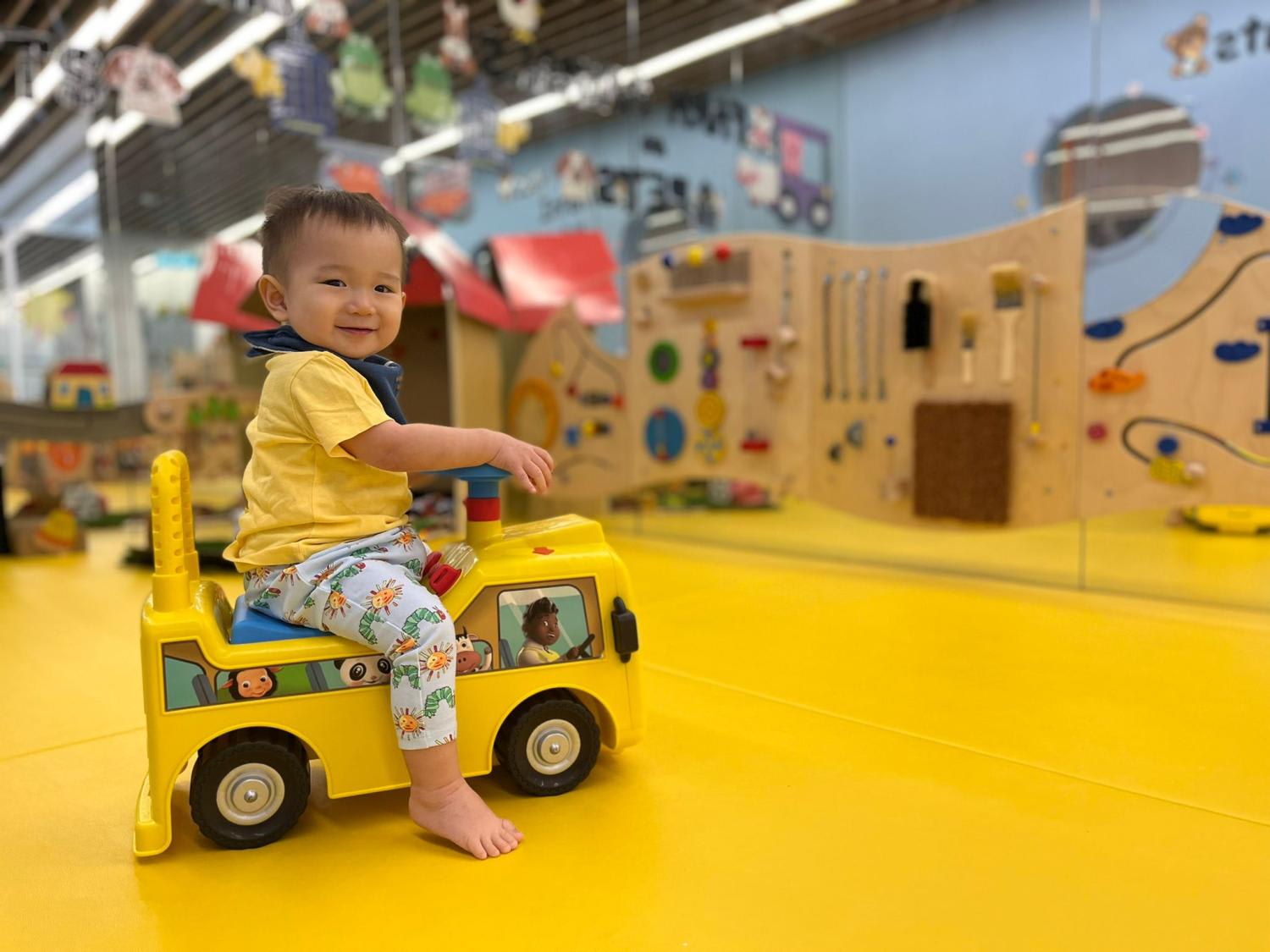The Big Read in short: A supply-demand mismatch for preschool places

As of last year, Singapore had capacity to accommodate a total of at least 234,079 children across infant care, childcare and kindergarten services. However, only 186,212 children were enrolled, which means that about 20 per cent of the slots were not taken up.
Each week, TODAY’s long-running Big Read series delves into the trends and issues that matter. This week, we examine why supply and demand of preschool places in Singapore do not add up. This is a shortened version of the full feature, which can be found here.
- Over the past years, millions have been invested in the preschool sector, with many new centres and tens of thousands of places for children opening up
- Based on latest available statistics, 20 per cent of overall preschool spaces across the island were unfilled as of 2021. The data does not include MOE kindergartens.
- Yet, in some newer estates such as Punggol, residents are often placed on long waiting lists when they try to enrol their children in a nearby preschool
- Experts and industry stakeholders point to a possible mismatch in demand and supply, with some preschools in mature estates grappling with falling enrolment
- Without central coordination and due to various factors such as perennial shortage of educators, it is challenging for the sector to be more responsive to shifts in demand
SINGAPORE — Despite having been put on a waiting list for over a year, Punggol resident Jessica Lo was unable to secure a spot for her one-and-a-half-year-old daughter at a preschool near her home — an experience many parents living in the young neighbourhood were all too familiar with.
“I even visited the schools to try and get a slot but they told me to apply online. No one has called me back yet,” said the mother of two, who is in her 30s and works in sales.
But this was not the case for other parents living outside of the island’s north-eastern district.
Just about 10 km south in Katong, the situation was drastically different for Mrs Sarah Foo, 38, who was able to enrol her now 14-month-old son in a private preschool late last year without the hassle of being put on a wait list.
The child will attend the preschool, which is within walking distance from home, in October this year. Mrs Foo, who is unemployed, said: "When I was ready to sign up...they (the preschool employees) were like, 'Yeah, no problem'...there was no waitlist."
Over at one preschool in Tiong Bahru, a preschool principal told TODAY that her centre is less than half-filled even though it has capacity to accommodate over 100 children.
Amid such discrepancies, there is no overall shortage of capacity to accommodate preschoolers in Singapore.
After all, efforts to increase the number of preschool places in Singapore have been underway in recent years.
Prime Minister Lee Hsien Loong said during his National Day Rally in 2017 that 40,000 preschool spots would be added by this year, which would double the total number of places to 200,000.
Mr Lee highlighted a shortage of preschool places for infants up to four years old, despite the fact that almost 50,000 childcare and kindergarten places had been added in young estates such as Punggol and Sengkang in the years before.
He also said then that the Government had more than doubled its annual spending on pre-schools from S$360 million in 2012 to S$840 million in 2017.
Based on data from the Early Childhood Development Agency (ECDA), Singapore has surpassed that goal.
As of last year, Singapore had capacity to accommodate a total of at least 234,079 children across infant care, childcare and kindergarten services. However, only 186,212 children were enrolled, which means that about 20 per cent of the slots were not taken up.
The statistics exclude the kindergartens run by the Ministry of Education (MOE). Earlier this week, MOE announced that it will open three more kindergartens in 2026 and 2027, bringing the total number to 60, offering about 8,300 Kindergarten 1 places in all.
Last week, news agency CNA also reported that seven new preschools will be set up in Punggol by the end of the year to address the long waiting lists and the lack of affordable childcare options in the estate. The move will provide an additional 220 infant care places and 1,700 childcare places.
With the statistics pointing to an abundant number of vacancies, why are some parents still finding it hard to enrol their children in preschools?
THE PUNGGOL SITUATION
Statistically speaking, Punggol has the highest proportion of children aged below five compared to the rest of the nation, according to a population trends report from the Singapore Department of Statistics (SingStats) last year.
Based on SingStats' data, as of June last year, there were about 14,640 children in this age bracket in Punggol, making about 8.3 per cent of the 176,190-strong population in the estate.
A check by TODAY using the ECDA’s preschool search portal found at least 121 preschool centres within a 2km radius around the Punggol MRT Station.
CNA reported that the number of childcare places in Punggol had grown by 55 per cent from 6,400 in 2017 to 9,800 last year, which was higher than the national increase of 30 per cent. The number of infant care places also more than doubled from 410 in 2017 to 900 in the same period.
Still, ECDA told CNA that the preschool situation remains "tight" in "certain Punggol subzones".
It added: "The shortages in infant and playgroup places have been exacerbated by Covid-19-related developments — such as preschool construction delays, difficulties in securing alternative care arrangements and parents preferring preschools near homes rather than workplaces.”
For Ms Lo, she had started looking for a preschool in Punggol for her daughter when she was just a few months old, as Ms Lo heard that the waiting time could be extremely long.
However, a year and multiple failed attempts later, she has yet to find a spot.

Ms Lo, who moved to Punggol five years ago, had applied to more than six anchor-operated preschools and a number of private ones in Punggol. Even after casting her net wider to include those in Sengkang, she has not had any luck.
“We have been told that there are enough preschools in Singapore but it doesn’t seem like there’s enough for everyone,” she lamented.
Indeed, the situation could not be more different in other estates. For example, Bukit Batok resident Nur Saniyah Abdul Manaf told TODAY that the process of enrolling her two children — aged two and four — “wasn’t really a difficult one”, despite living in a non-mature estate.
According to SingStats' report last year, there were about 8,640 children under the age of five in Bukit Batok, or about 5.4 per cent of its 160,150-strong population.
“When we got our BTO (Built-To-Order) flat, we saw a poster for preschool enrolment. The school wasn't ready yet but we just called them first to enrol my first child,” the 33-year-old preschool teacher said.
When Ms Saniyah was pregnant with her second child, the preschool principal asked if she would like to enrol the unborn baby in the same school since siblings would be given priority. The principal also urged Ms Saniyah to register quickly as the school’s infant care was always full.
“They have a waiting list but once an infant withdraws or moves on to the next class, they will give priority to siblings,” Ms Saniyah said. “So I registered my second one when I was only five months’ pregnant to secure the slot.”
ECDA’s preschool search portal showed that there are at least 84 preschools within a 2km radius of Bukit Batok MRT Station.

A quick check based on ECDA's search portal and SingStats' population trends report last year shows an uneven distribution of preschool centres in various estates vis-à-vis the number of children aged under five:
● Ang Mo Kio — 75 centres, 5,130 children
● Outram — 62 centres, 570 children
● Rochor — 57 centres, 390 children
● Bukit Merah — 79 centres, 5,800 children
● Kallang — 80 centres, 3,770 children
The principal of the Tiong Bahru preschool, who is in her mid-30s and wanted to be known only as Mdm K M, said that the fact that her school is less than half-filled shows there is “definitely a mismatch in demand”.
“Where (I’m working), there are many other preschool centres, but it is an ageing neighbourhood. I’m not meeting my enrolment KPI (key performance index),” said Mdm K M, who has more than a decade’s experience in the early childhood sector.
However, Associate Professor Rita Padawangi, an urban sociologist at the Centre for University Core in SUSS, said that it is not a straightforward situation of a mismatch in supply and demand between older and newer estates.
Assoc Prof Padawangi, whose research interest includes place-making and neighbourhoods, said it really depends on how long the preschools in older estates have existed.
“If they have been there a long time and there is dwindling enrolment, then it’s really part of the life cycle of a community, and not as simple as a mismatch of supply and demand," she said. "If there is a new preschool centre established in an older estate and it’s not (even) half-filled, then it is a clear case of mismatch between supply and demand."
HOW OPERATORS DECIDE WHERE TO SET UP PRESCHOOLS
When it comes to assessing where new preschool centres should be located, most operators approached by TODAY declined to comment or get into specifics.
Ms Marini Khamis, a senior director in the preschool management division of the PAP Community Foundation (PCF), said it works closely with the ECDA to monitor preschool demand and trends.
PCF manages the anchor operator PCF Sparkletots, Singapore’s largest preschool operator with over 360 centres.
Ms Marini said enrolment levels correspond to demand, which tends to be lower in some mature estates such as Ang Mo Kio, where there are fewer families with young children.
The reverse is true for younger estates where there are more families with young children, such as Punggol.
Nevertheless, Ms Marini said that mature estates such as Tampines “are still seeing good demand and enrolment levels” due to new BTO developments. Similar reasons were given for Tampines North, Sengkang, Yishun and Woodlands.
“Demand may be related to parents’ needs related to work from home arrangements," she said. “But it may also be due to increasing recognition of the value of enrolling children early in preschool for optimal development and learning experiences."
For Mr Oliver Houchin, who is the director and founder of the Tots and Teddies preschool, his decision to set up the private preschool at the heart of the Central Business District — Cecil Street, to be precise — was based on a realisation that there was a lack of “good options” in terms of preschool centres catering to parents working in the CBD.
On how responsive can private operators be to shifting demands, Mr Houchin said it depends on factors such as staffing, rental location and the centre’s size.
“I would say the private sector is still agile, but within the confinements of existing commitments and contractual obligations," he said.
“The question is not if we have capacity, but where we have capacity… and should we be adding capacity (where it is needed) or moving it there?Mr Oliver Houchin, director and founder of the Tots and Teddies preschool”
In any case, Mr Houchin reiterated that there are “enough places for childcare in Singapore”.
“The question is not if we have capacity, but where we have capacity…and should we be adding capacity (where it is needed) or moving it there?" he said.

Several operators told TODAY that while it would be theoretically possible to consider closing a preschool centre with low-demand and moving it elsewhere, there are other factors to consider.
For instance, Mr Houchin said not all landlords are keen on having childcare centres in their commercial premises because they do not generate enough footfall to support their other shops, or due to a perception that such centres create noise which other tenants might complain about.
A spokesperson for Busy Bees Asia, which manages the Pat’s Schoolhouse chain of preschools, said it depends on the availability of an appropriate space, especially where land is scarce.
Even if an operator is able to secure a location, there will be consequences of relocating, PCF’s Ms Marini said.
This is because the accessibility of preschool services in the current area would be affected, since there would be residual demand which needs to be served.
“In addition, it is important to ensure that the preschool education of existing cohorts is not disrupted,” added Ms Marini.
Mr Houchin noted that by relocating, operators would also stand to lose large sums of money that they had invested to turn a premise into a preschool.
MANPOWER WOES, TEACHER BURNOUT POST-COVID
While building more preschools is perhaps unavoidable, some industry players said that there must also be sufficient teachers to staff them — and therein lies the rub.
SUSS’ Assoc Prof Lim said the main issue seems to be the general lack of trained preschool teachers to fill positions in the expanding sector, where new childcare centres are set up every year, as well as the sector’s general inability to retain teachers.
While the number of early childhood educators in the sector had increased from 18,000 in 2018 to more than 23,000 in 2021, industry players said that attrition remains a problem — especially post Covid-19 pandemic.
Between 2018 and 2021, total preschool enrolment increased by almost 7,500 from 178,734 to 186,212, while the number of centres went up from 1,486 to 1,588.
For a 23-year-old employed by an anchor operator in the MacPherson area, the realities of working as a preschool teacher for the past three years have not matched her initial expectations.
“I thought the role of a preschool teacher was to teach children, create activities and make learning fun for them. But after I started teaching, I learnt that the job scope of a preschool teacher was far more than that, ” said Ms Low, who declined to give her full name.
“Given a national shortage of qualified and experienced educators, there should be more strategic decisions being made about where new centres should be set up so that operators are not thinning out their already-stretched human resource.Associate Professor Sirene Lim, an early childhood education expert from the Singapore University of Social Sciences”
Besides teaching in the classroom, teachers are expected to complete a large amount of paperwork, communicate with parents, take care of children when they fall sick, as well as prepare lesson plans.
She added that the large amount of workload “makes it difficult to have a work-life balance” and teachers face burnout easily, resulting in many choosing to leave the industry.
Mdm K M said that three teachers had left her centre in 2020. The same number of teachers quit last year and another two recently resigned. Replacements are hard to come by, often taking months — as long as four months, in one instance — before a void can be filled.
“Working through the pandemic made people reflect if this is worth it,” she said.
Aside from having to familarise themselves with new Covid-19 safe management measures and procedures for managing infection cases “ever so often”, preschool staff also have had to adhere to a higher level of hygiene and safety measures.
“We had to report Covid cases during our non-working hours, which ate into family time. Nights or weekends, they all had to be reported within four hours to the Ministry of Health. And, you know, our pay doesn’t make up for all the pain points,” said Mdm K M.
In recent years, the Government has been working with the operators to increase the salaries of preschool educators.
While the industry players acknowledge the significant efforts to address the preschool sector's litany of woes, some believed these measures amount to firefighting, without adequately dealing with the deeper issues.
For Mdm K M, one of the pressing issues is attracting and retaining preschool educators by addressing the "pain points".
“We end up having to keep training people, only for them to leave later and causing a manpower drain on the centre,” she said.
Associate Professor Sirene Lim, an early childhood education expert from the Singapore University of Social Sciences, added: “Given a national shortage of qualified and experienced educators, there should be more strategic decisions being made about where new centres should be set up so that operators are not thinning out their already-stretched human resource.”













